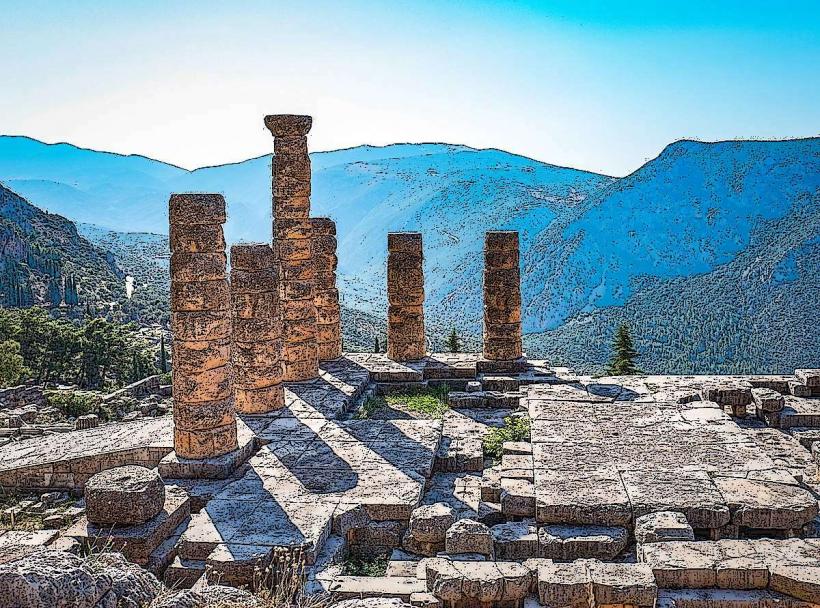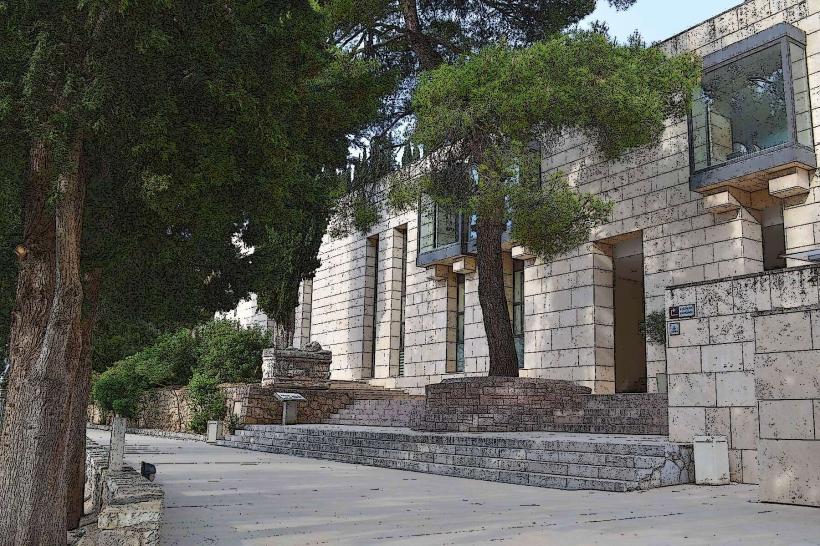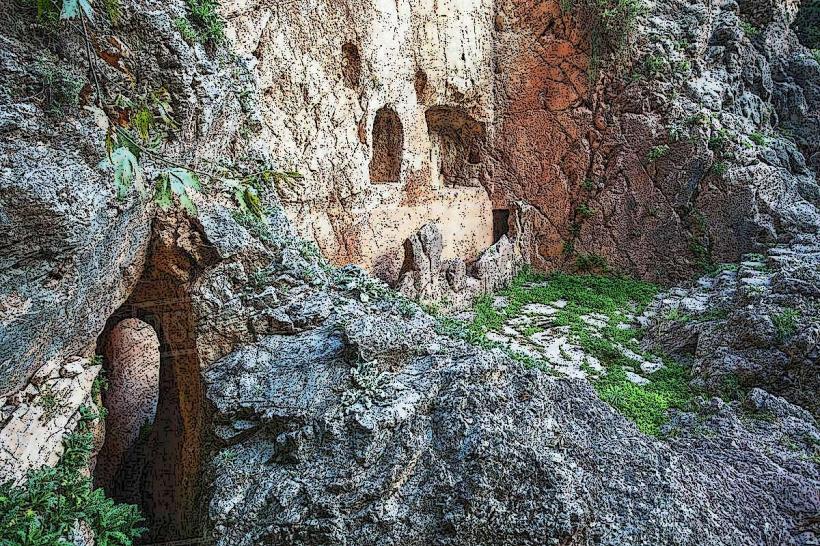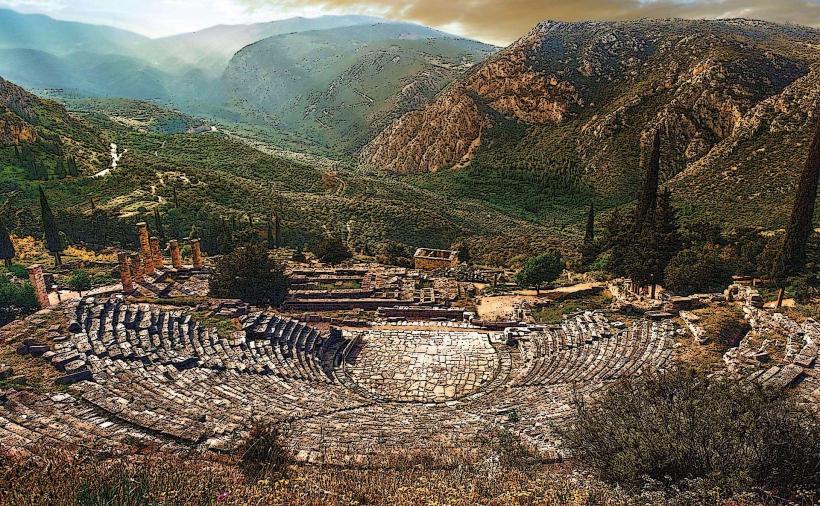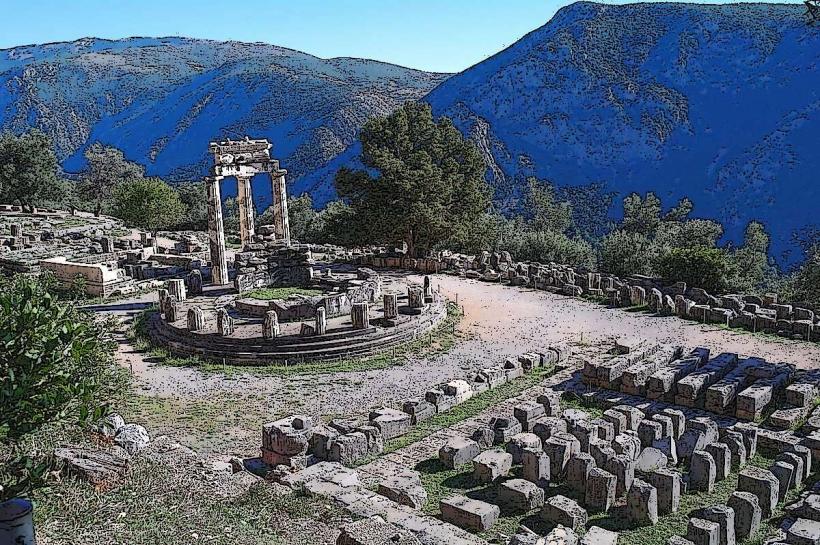Information
Landmark: Athenian TreasuryCity: Delphi
Country: Greece
Continent: Europe
The Athenian Treasury (Greek: Θησαυρός των Αθηναίων) at Delphi is one of the most significant monuments of the sanctuary of Apollo, constructed by the Athenians in the late 6th century BCE. It was a small, temple-like structure built to house the offerings and treasures of the Athenians, particularly those made in gratitude for their victory at the Battle of Marathon (490 BCE) against the Persians. This monument is a vital example of the role that Delphi played in Greek religious and civic life, as well as an important marker of the Athenians' political and artistic achievements.
1. Historical Context and Purpose
- Date of Construction: The Athenian Treasury was constructed around 490 BCE, shortly after the victory of the Athenians over the Persians at the Battle of Marathon. It was dedicated to Apollo as a token of gratitude for the god's protection and favor during the battle.
- Civic Significance: This treasury was not only a religious offering but also a public declaration of Athenian pride and power. It served as a symbol of Athens' strength, both militarily and culturally, following their success at Marathon. By dedicating the treasury at Delphi, the Athenians were reaffirming their place among the most powerful Greek city-states and showcasing their wealth and artistry to the world.
- Function: The main purpose of the Athenian Treasury was to house the valuable offerings made by the Athenians to Apollo and other gods. This included votive gifts, trophies, and other precious items presented by the city as thanks for divine support in times of war and conflict.
2. Architectural Features
The Athenian Treasury was designed in the Doric order, which was the most common architectural style for temples and public buildings in ancient Greece. It is a small rectangular building, with a single room (known as a naos) and a front and rear colonnade, which provided a visually impressive facade.
- Dimensions: The building measured approximately 8.4 meters (27.6 feet) long and 5.5 meters (18 feet) wide, making it a relatively small structure compared to other treasuries and temples at Delphi.
- Columns: The exterior of the treasury featured six columns at the front (a hexastyle configuration) and eleven columns along the sides, which was a typical arrangement for small temples during this period. The columns were made of local limestone, though they were later replaced with marble during restoration efforts.
- Frieze and Decoration: One of the most remarkable aspects of the Athenian Treasury was its sculptural decoration. The structure featured a frieze on its exterior that was richly decorated with scenes from Greek mythology, showcasing the artistic skill of the Athenians and their devotion to Apollo.
3. Sculptural Decoration
The Athenian Treasury is particularly well-known for its frieze and its pediment, which are highly important examples of early Classical Greek art.
- The Frieze: The frieze of the Athenian Treasury is decorated with scenes of mythical battles, depicting famous events from Greek mythology. The most significant part of the frieze shows the battle between the Giants and the Olympian gods (Gigantomachy). This mythological battle, which symbolized the victory of order and civilization over chaos and barbarism, was an important theme in the art and politics of many Greek city-states, including Athens.
- The Pediment: The triangular pediment of the Athenian Treasury was also adorned with sculptural reliefs. It is believed to depict scenes from the myth of Heracles (Hercules), specifically his Labors. These sculptures were significant because they conveyed the heroic deeds of one of Greece's most famous mythical figures.
- Style and Influence: The sculptures on the Athenian Treasury exhibit a clear progression towards the Classical style, characterized by more naturalistic and dynamic representations of human figures, compared to the earlier, more rigid forms of the Archaic period. The figures in the frieze, for example, show greater attention to anatomy, movement, and expression, signaling the shift toward the style of the great Classical sculptors like Phidias.
4. Votive Offerings and Inscriptions
Inside the treasury, the Athenians housed numerous votive offerings to Apollo, including gold and silver vessels, statues, and other precious objects. Some of these items were monumental in scale, while others were more personal in nature, representing individual thanks or devotions to the god. The Athenians also inscribed their donations with inscriptions, many of which were found during excavations at Delphi. These inscriptions commemorated their victory at Marathon and their dedication to Apollo.
- Marathon Victory: One inscription records the Athenian victory at Marathon and their gratitude to Apollo, underlining the importance of this event in the city's history and its connection to Delphi.
- Other Inscriptions: Other inscriptions relate to the city of Athens' political life, reinforcing the city’s status as the leading power in Greece during the 5th century BCE.
5. Cultural and Religious Significance
- Athens and Delphi: The Athenian Treasury is one of many votive offerings made by city-states at Delphi, but it is especially significant due to the scale of Athens' contribution to the sanctuary. Delphi, as the center of the Oracle of Apollo, was an ideal place for city-states to show their piety, display their wealth, and seek the favor of the gods. The treasury reflects the close relationship between Athens and Delphi, especially during the period when Athens was emerging as a dominant force in the Greek world.
- Religious Function: The Athenian Treasury was part of a broader religious practice in which city-states made offerings at Delphi to ensure divine favor. Pilgrims who visited the sanctuary came not only for the oracles but also to admire the wealth and grandeur of the dedications made by various Greek cities, and the Athenian Treasury was one of the most prominent such dedications.
- Symbol of Athenian Power: By dedicating the treasury, Athens was not only making a religious offering but also establishing its prominence in the wider Greek world. The structure was an assertion of Athenian power, and its architectural and artistic features were intended to reflect the city's wealth, strength, and cultural achievements.
6. Modern Archaeological Findings
Today, the Athenian Treasury is an important point of interest for visitors to Delphi. The structure has undergone extensive restoration, and many of the sculptural fragments that once adorned it have been moved to the Delphi Archaeological Museum for preservation and study. The museum displays several sections of the frieze and the pedimental sculptures, offering insights into the artistic and religious practices of ancient Athens.
- Restoration: Though much of the original building no longer stands, significant portions of the foundations and the columned facade have been preserved, providing visitors with a sense of the grandeur of the monument.
- Sculptural Fragments: The surviving pieces of the frieze and pediment offer a glimpse into the artistic style of the late 6th century BCE and the level of sophistication that the Athenians brought to their religious dedications.
Conclusion:
The Athenian Treasury at Delphi is not only a symbol of Athens' gratitude to Apollo but also a testament to the city's wealth, artistic skill, and political ambition. Through its architecture, sculptural decoration, and inscriptions, it encapsulates the religious, civic, and cultural values of Athens during the height of its power in the 5th century BCE. The treasury is an iconic structure that highlights the role of Delphi as a central religious and cultural hub in the ancient Greek world.

